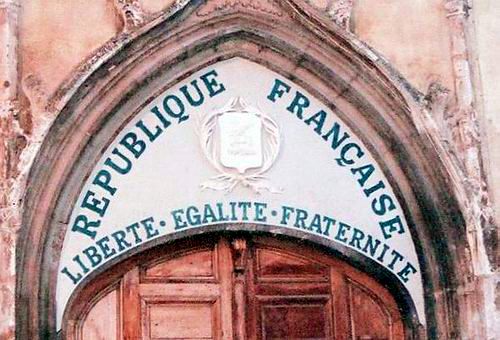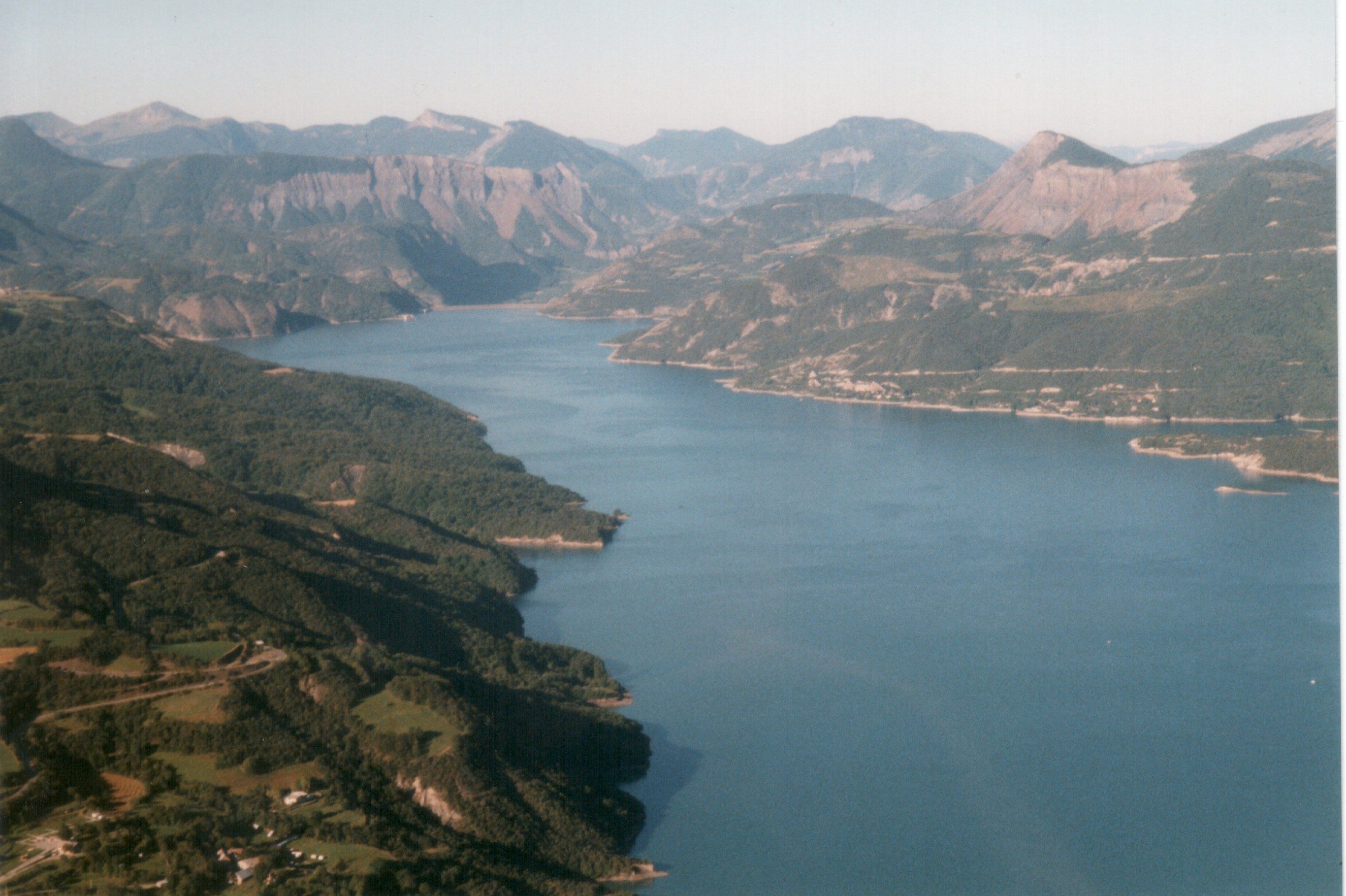|
Les Prêtres
Les Prêtres (meaning The Priests in English) is the name of a musical trio created by the initiative of Mgr Jean-Michel di Falco. The project was inspired by the success of a similar Irish musical project called The Priests. Les Prêtres has released the French chart-topping album ''Spiritus Dei'' (March 2010) on label TF1 Musique with the album certified a diamond disc for selling more than 500,000 copies. (in French) Later sales increased the figure to more than 800,000 copies. Les Prêtres is released their second album ''Gloria'' in April 2011. Both albums have been successes in France, Belgium and Switzerland. Career After discussions with Didier Barbelivien, Mgr Jean-Michel di Falco Léandri, bishop of Gap and Embrun (Hautes-Alpes) proposed to two priests of the seminary of the Diocese of Gap and Embrun and a former member of the seminary, all from the Roman Catholic Diocese of Gap and Embrun to record a charity album to benefit two projects, one pastoral, to finance pa ... [...More Info...] [...Related Items...] OR: [Wikipedia] [Google] [Baidu] |
Gap, Hautes-Alpes
Gap (, ) is the prefecture of the Hautes-Alpes department in the Provence-Alpes-Côte d'Azur region in Southeastern France. In 2019, the commune had a population of 40,631, making it the most populated city in Hautes-Alpes. At a height of 750 metres above sea level, to the south of the Écrins Massif, it is also France's highest prefecture. Together with other Alpine towns, Gap engages in the Alpine Town of the Year Association for the implementation of the Alpine Convention to achieve sustainable development in the Alpine Arc. Gap was awarded Alpine Town of the Year in 2002. In 2013 Gap was named the sportiest city in France by the national sports newspaper ''L'Équipe''. Toponymy The first attestation of the name of the city is located in the ancient texts as ''Vappincum'', later reduced to ''Vappum'', the form of Gap is found in the 13th century. The toponym ''Vappincum'' is analyzed on the basis of a radical ''Vapp-'' unknown meaning, and the suffix ''-incu'' of Liguria ... [...More Info...] [...Related Items...] OR: [Wikipedia] [Google] [Baidu] |
Switzerland
). Swiss law does not designate a ''capital'' as such, but the federal parliament and government are installed in Bern, while other federal institutions, such as the federal courts, are in other cities (Bellinzona, Lausanne, Luzern, Neuchâtel, St. Gallen a.o.). , coordinates = , largest_city = Zürich , official_languages = , englishmotto = "One for all, all for one" , religion_year = 2020 , religion_ref = , religion = , demonym = , german: Schweizer/Schweizerin, french: Suisse/Suissesse, it, svizzero/svizzera or , rm, Svizzer/Svizra , government_type = Federalism, Federal assembly-independent Directorial system, directorial republic with elements of a direct democracy , leader_title1 = Federal Council (Switzerland), Federal Council , leader_name1 = , leader_title2 = , leader_name2 = Walter Thurnherr , legislature = Fe ... [...More Info...] [...Related Items...] OR: [Wikipedia] [Google] [Baidu] |
Wallonia
Wallonia (; french: Wallonie ), or ; nl, Wallonië ; wa, Waloneye or officially the Walloon Region (french: link=no, Région wallonne),; nl, link=no, Waals gewest; wa, link=no, Redjon walone is one of the three regions of Belgium—along with Flanders and Brussels. Covering the southern portion of the country, Wallonia is primarily French-speaking. It accounts for 55% of Belgium's territory, but only a third of its population. The Walloon Region and the French Community of Belgium, which is the political entity responsible for matters related mainly to culture and education, are independent concepts, because the French Community of Belgium encompasses both Wallonia and the bilingual Brussels-Capital Region. There is a German-speaking minority in eastern Wallonia, resulting from the annexation of three cantons previously part of the German Empire at the conclusion of World War I. This community represents less than 1% of the Belgian population. It forms the German-speak ... [...More Info...] [...Related Items...] OR: [Wikipedia] [Google] [Baidu] |
Le Figaro
''Le Figaro'' () is a French daily morning newspaper founded in 1826. It is headquartered on Boulevard Haussmann in the 9th arrondissement of Paris. The oldest national newspaper in France, ''Le Figaro'' is one of three French newspapers of record, along with ''Le Monde'' and ''Libération''. It was named after Figaro, a character in a play by polymath Beaumarchais (1732–1799); one of his lines became the paper's motto: "''Sans la liberté de blâmer, il n'est point d'éloge flatteur''" ("Without the freedom to criticise, there is no flattering praise"). With a centre-right editorial line, it is the largest national newspaper in France, ahead of ''Le Parisien'' and ''Le Monde''. In 2019, the paper had an average circulation of 321,116 copies per issue. The paper is published in Berliner format. Since 2012 its editor (''directeur de la rédaction'') has been Alexis Brézet. The newspaper has been owned by Dassault Group since 2004. Other Groupe Figaro publications include ''Le ... [...More Info...] [...Related Items...] OR: [Wikipedia] [Google] [Baidu] |
Laïcité
(; 'secularism') is the constitutional principle of secularism in France. Article 1 of the French Constitution is commonly interpreted as discouraging religious involvement in government affairs, especially religious influence in the determination of state policies. It also forbids government involvement in religious affairs, and especially prohibits government influence in the determination of religion. Secularism in France includes a right to the free exercise of religion. French secularism has a long history: for the last century, the French government policy has been based on the 1905 French law on the Separation of the Churches and the State, See drop-down essay on "The Third Republic and the 1905 Law of Laïcité", which is however not applicable in Alsace and Moselle. While the term ''laïcité'' has been used from the end of the 19th century to denote the freedom of public institutions from the influence of the Catholic Church, the concept today covers other religious ... [...More Info...] [...Related Items...] OR: [Wikipedia] [Google] [Baidu] |
Christians In The Middle East
Christianity, which originated in the Middle East during the 1st century AD, is a significant minority religion within the region, characterized by the diversity of its beliefs and traditions, compared to Christianity in other parts of the Old World. Christians now make up approximately 5% of the Middle Eastern population, down from 20% in the early 20th century. Cyprus is the only Christian majority country in the Middle East, with Christians forming between 76% and 78% of the country's total population, most of them adhering to Eastern Orthodox Christianity. Lebanon has the second highest proportion of Christians in the Middle East, around 40%, predominantly Maronites. Egypt has the next largest proportion of Christians (predominantly Copts), at around 10% of its total population. Copts, numbering around 10 million, constitute the single largest Christian community in the Middle East. The Eastern Aramaic speaking Assyrians of northern Iraq, northeastern Syria, southea ... [...More Info...] [...Related Items...] OR: [Wikipedia] [Google] [Baidu] |
RATP Group
RATP may refer to: Transportation: * RATP Group, or ', a public transport operator based in Paris, France * RATP Iași (), a transit operator responsible for public transportation in Iași, Romania * RATP Ploiești (), a transit operator responsible for public transportation in Ploiești Ploiești ( , , ), formerly spelled Ploești, is a city and county seat in Prahova County, Romania. Part of the historical region of Muntenia, it is located north of Bucharest. The area of Ploiești is around , and it borders the Blejoi commu ..., Romania Computation: * Reliable Asynchronous Transfer Protocol (RATP), defined in RFC 916 {{Disambiguation ... [...More Info...] [...Related Items...] OR: [Wikipedia] [Google] [Baidu] |
Les Choristes
''Les Choristes'' ("The Chorus" or "The Chorus Singers") is an 1877 pastel on monotype by French artist Edgar Degas. Part of a series of similar works depicting daily public entertainment at the time, it shows a group of singers performing a scene from the opera ''Don Giovanni'', the only work by Degas depicting an operatic performance without dancers. ''Les Choristes'', and other contemporary works of the artist such as '' Café-Concert at Les Ambassadeurs'', show the influence of French caricaturists of the era. Honoré Daumier is often invoked, but critics and art historians have identified others. Critics at the time praised it, with one suggesting that the singers' "hideous" faces made them seem more real. After its initial exhibition, ''Les Choristes'' was purchased by Gustave Caillebotte, a fellow painter and friend of Degas's who used his own large inheritance to support fellow Impressionists. Caillebotte bequeathed it to the state upon his death in 1894, which added it t ... [...More Info...] [...Related Items...] OR: [Wikipedia] [Google] [Baidu] |
Patrick Bruel
Patrick Benguigui (; born 14 May 1959), better known by his stage name Patrick Bruel (), is a French singer-songwriter, actor and professional poker player. Biography Early life Patrick is the son of Pierre Benguigui and Augusta Kammoun, daughter of Elie and Céline ben Sidoun. In his youth, Bruel aspired to be a football player, but decided instead to pursue singing after seeing Michel Sardou in 1975. Acting and music careers His first success came as an actor, in 1979's ''Le Coup de sirocco''. He continued acting in films, on television, and in the theater while pursuing his singing career. His first single, "Vide" ("Empty"), released in 1982, was not a success, but the follow-up, "Marre de cette nana-là" ("Fed up with that chick"), was a hit. In 2003, just before his partner, the writer and playwright Amanda Sthers, gave birth to his first child, Oscar, on 19 August, he changed his name to Bruel-Benguigui, combining his stage name with his birth name. On 21 Septembe ... [...More Info...] [...Related Items...] OR: [Wikipedia] [Google] [Baidu] |
Our Lady Of Laus
Our Lady of Laus (french: Notre-Dame du Laus) or Refuge of Sinners denotes Marian apparitions that took place between 1664 and 1718 in Saint-Étienne-le-Laus, France, to Benoîte Rencurel, a young shepherdess. The apparitions were approved by the Holy See on 5 May 2008. Pope Pius IX granted a Canonical Coronation to her marble image on 23 May 1855. Background Situated in Dauphiné, in southern France at the foot of the Alps, just southeast of Gap, is the valley of Laus. Its name means "lake" in the local dialect, as there once was one at the bottom of the basin. In 1666 the hamlet held twenty households scattered in little huts. The inhabitants had built a chapel dedicated to the Annunciation, ''Notre-Dame de Bon Rencontre'' (means Our Lady of the Good Encounter, i.e., the Annunciation). Apparitions Benoite was born on September 16, 1647, into extreme poverty in the village of St Etienne d’Avancon. Her father died when she was only seven. By the time Benoite was twelve she to ... [...More Info...] [...Related Items...] OR: [Wikipedia] [Google] [Baidu] |
Embrun, Hautes-Alpes
Embrun (; oc, Ambrun , la, Ebrodunum, , and ) is a commune in the Hautes-Alpes department in the Provence-Alpes-Côte d'Azur region in southeastern France. Description It is located between Gap and Briançon and at the eastern end of one of the largest artificial lakes in Western Europe: the Lac de Serre-Ponçon. The Canadian town of Embrun, Ontario was named after Embrun in 1856. History Embrun was formerly known as Ebrodunum ( in Greek language sources). There is some variation in the writing of the first part of the name. It is Epebrodunum in Strabo's text, but later translators corrected it. Strabo (iv.) says that from Tarasco to the borders of the Vocontii and the beginning of the ascent of the Alps, through the Druentia and Caballio, is 63 miles; and from thence to the other boundaries of the Vocontii, to the kingdom of Cottius (the Alpes Cottiae), to the village of Ebrodunum, 99 miles. Ebrodunum was in the ''civitas'' (tribal state) of the Caturiges, and just on ... [...More Info...] [...Related Items...] OR: [Wikipedia] [Google] [Baidu] |





